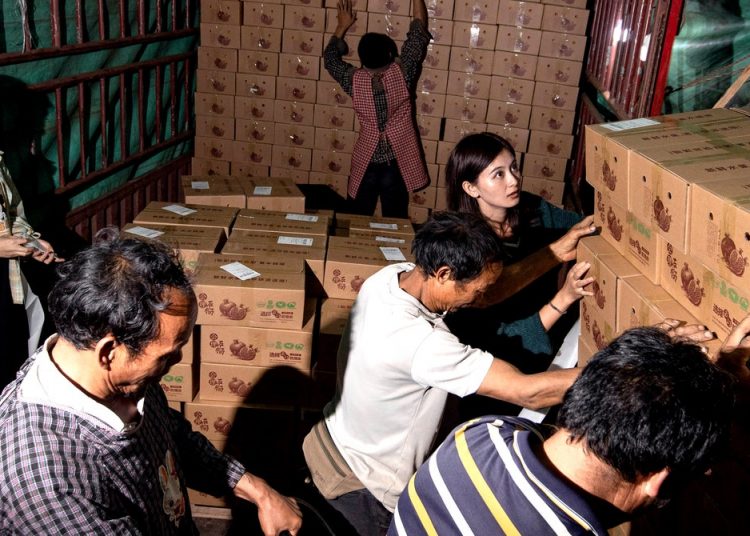He Shuang, who grows pomegranates in southern Sichuan province, is a Pinduoduo New Farmer. The former flight attendant returned to her remote mountain hometown from the city of Kunming in 2017. She initially sent fruit by truck to wholesalers around China, who then resold the fruit to consumers. After switching to Pinduoduo, He could reach consumers directly; she says that created “strong and predictable demand for our produce, which in turn keeps our cash flow healthy.”
In a recent video, she plucked a pomegranate from a bush in her orchard and, because she “has no nails,” bit down on the peel to reveal its juicy seeds. Though she was stiff at first, He now shows an on-camera flair. “Livestreaming is just like chatting with customers to develop trust,” she says. Her spiking sales prompted Pinduoduo to recruit her for video and text marketing. He’s warehouse staff is now 150 strong, and her annual revenue for 2019 was 40 million yuan ($5.7 million).
Sofya Bakhta, an analyst at Daxue Consulting, says Pinduoduo’s group-purchase model helped aggregate dispersed consumer demand and connected those buyers with farmers, “effectively creating a scaled-up national market.” That lowered farmers’ costs and gave them some of the benefits of large-scale farming. In the past, says Gerard Sylvester, an investment officer with the UN FAO, farmers often suffered from uncertain demand and volatile prices. “We have seen several instances of a farmer driving his…


























































